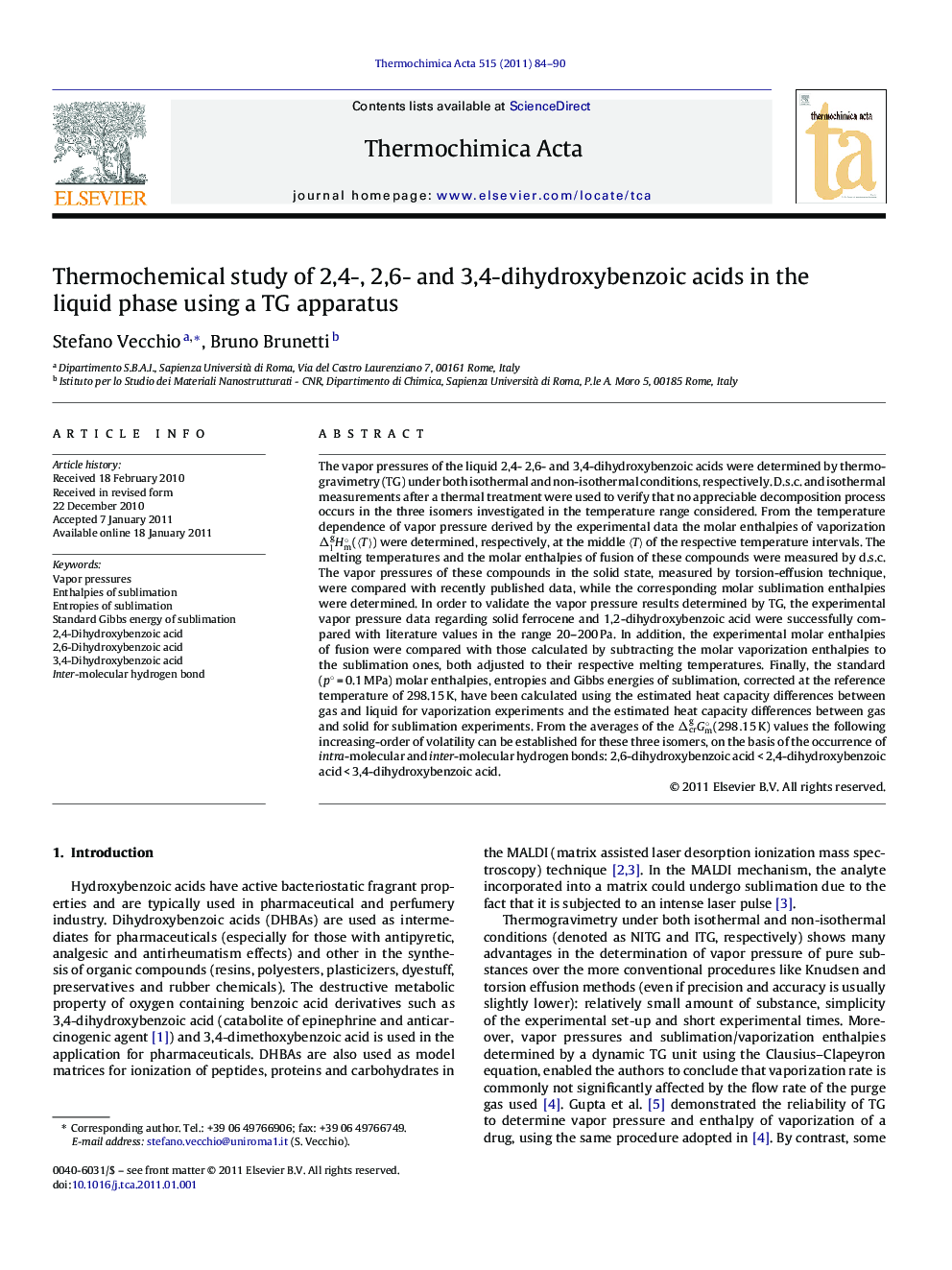| Article ID | Journal | Published Year | Pages | File Type |
|---|---|---|---|---|
| 674605 | Thermochimica Acta | 2011 | 7 Pages |
The vapor pressures of the liquid 2,4- 2,6- and 3,4-dihydroxybenzoic acids were determined by thermogravimetry (TG) under both isothermal and non-isothermal conditions, respectively. D.s.c. and isothermal measurements after a thermal treatment were used to verify that no appreciable decomposition process occurs in the three isomers investigated in the temperature range considered. From the temperature dependence of vapor pressure derived by the experimental data the molar enthalpies of vaporization ΔlgHm°(〈T〉) were determined, respectively, at the middle 〈T〉 of the respective temperature intervals. The melting temperatures and the molar enthalpies of fusion of these compounds were measured by d.s.c. The vapor pressures of these compounds in the solid state, measured by torsion-effusion technique, were compared with recently published data, while the corresponding molar sublimation enthalpies were determined. In order to validate the vapor pressure results determined by TG, the experimental vapor pressure data regarding solid ferrocene and 1,2-dihydroxybenzoic acid were successfully compared with literature values in the range 20–200 Pa. In addition, the experimental molar enthalpies of fusion were compared with those calculated by subtracting the molar vaporization enthalpies to the sublimation ones, both adjusted to their respective melting temperatures. Finally, the standard (p° = 0.1 MPa) molar enthalpies, entropies and Gibbs energies of sublimation, corrected at the reference temperature of 298.15 K, have been calculated using the estimated heat capacity differences between gas and liquid for vaporization experiments and the estimated heat capacity differences between gas and solid for sublimation experiments. From the averages of the ΔcrgGm°(298.15 K) values the following increasing-order of volatility can be established for these three isomers, on the basis of the occurrence of intra-molecular and inter-molecular hydrogen bonds: 2,6-dihydroxybenzoic acid < 2,4-dihydroxybenzoic acid < 3,4-dihydroxybenzoic acid.
Research highlights▶ Vapor pressures of solid and liquid 2,4- 2,6- and 3,4-dihydroxybenzoic acids, that don’t decompose appreciably in the temperature range considered, were determined by torsion-effusion technique and thermogravimetry, respectively. ▶ Agreement between the experimental sublimation vapor pressures and literature data recently published is good for all the three isomers. ▶ From the temperature dependence of vapor pressure the molar enthalpies of sublimation and vaporization were determined at the middle
